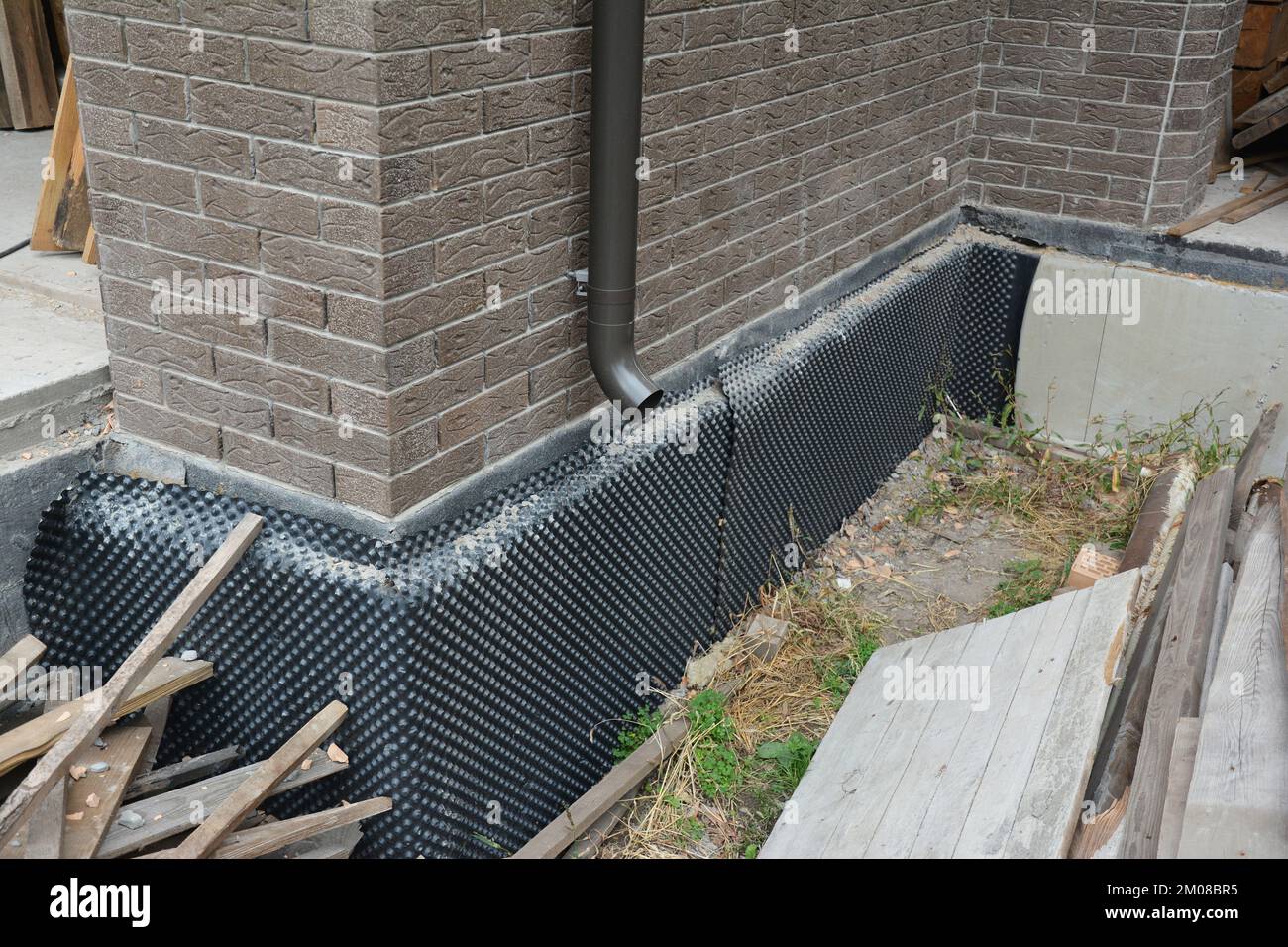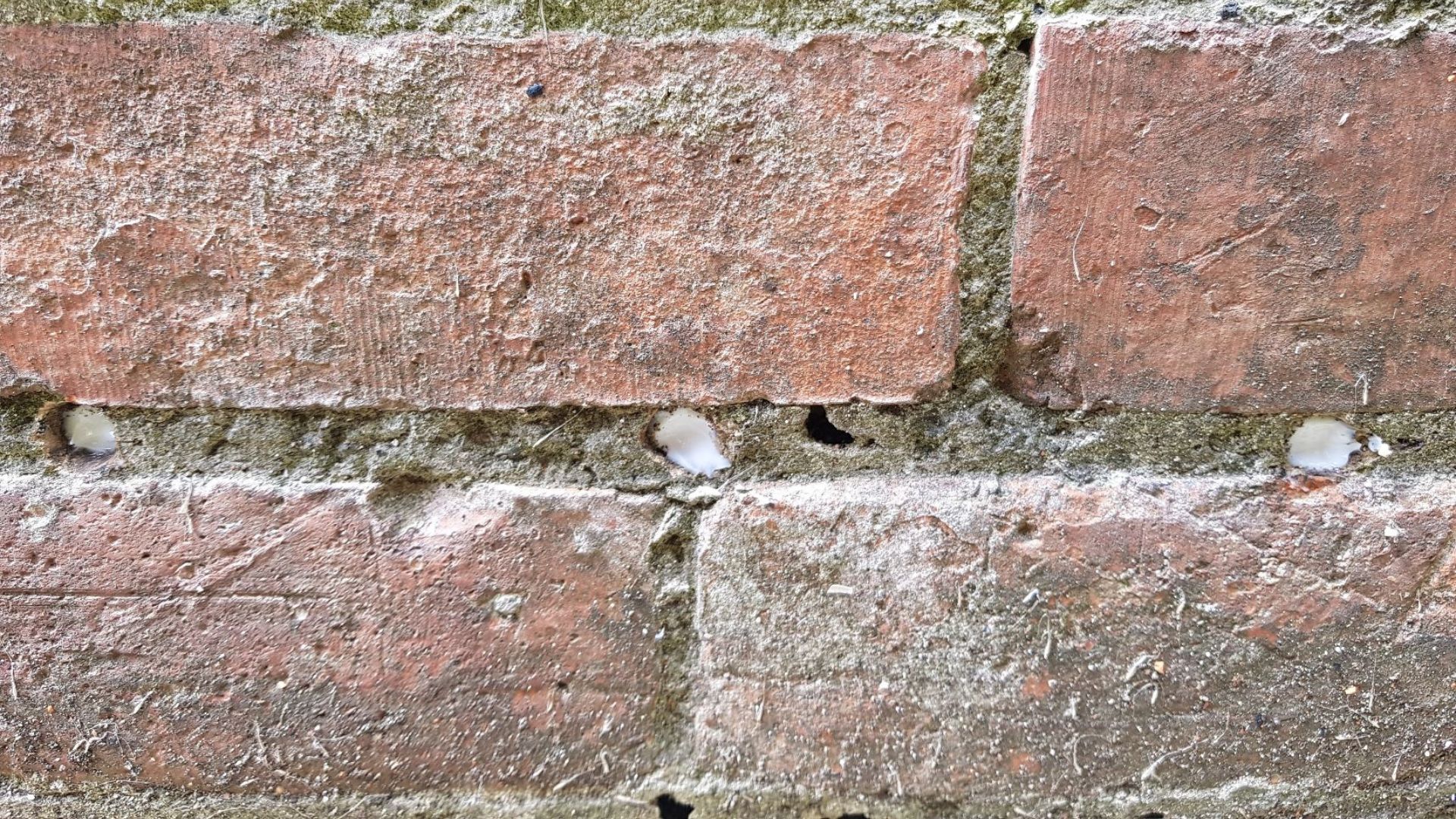Hidden signs you need damp proofing newcastle services now
Wiki Article
Discovering the Different Strategies and Solutions for Effective Damp Proofing
Wetness in buildings presents significant obstacles to both architectural stability and interior air high quality. Numerous strategies and options have emerged to combat this pervasive problem. From traditional damp-proof membranes to innovative chemical therapies, each approach provides one-of-a-kind benefits. Comprehending these alternatives is important for effective moisture control. Nonetheless, picking the best option relies on particular building problems and requirements, triggering more exploration right into one of the most effective damp proofing methods offered.Understanding the Sources Of Dampness
Wetness can develop from various resources, comprehending these reasons is essential for reliable removal. Generally, dampness stems from 3 main resources: increasing moist, permeating wet, and condensation. Increasing wet happens when groundwater travels up with porous products, such as block or stone, usually because of a lack of an efficient obstacle (mould removal newcastle). Permeating damp is commonly created by outside elements, including roof leakages, faulty rain gutters, or damaged wall surfaces, enabling water to infiltrate a residential property. Condensation, on the other hand, arises from excess moisture in the air, typically intensified by inadequate air flow and temperature differences, bring about water beads forming on surfaces. Determining these underlying problems is essential, as each sort of moisture needs a customized method for removal. Appropriate analysis aids in identifying the most efficient services, eventually securing the structural integrity of a structure and boosting indoor air top qualityConventional Damp-Proof Membranes

Chemical Damp-Proofing Solutions
Chemical damp-proofing services use an innovative strategy to protecting against dampness invasion in buildings. These techniques typically include the application of liquid chemicals that pass through stonework and develop a barrier against rising moist. Generally utilized chemicals include silanes, siloxanes, and other water-repellent representatives that react with surface area materials to produce a hydrophobic layer.The application procedure typically requires boring holes into the walls, infusing the chemical remedy, and allowing it to heal. This method is particularly helpful for older frameworks where traditional damp-proof membrane layers might be not practical. Additionally, chemical damp-proofing can be much less turbulent and a lot more cost-effective than substantial improvement projects.While efficient, these solutions depend on proper application and ecological conditions for peak efficiency. Regular upkeep and surveillance are important to guarantee the longevity of the damp-proofing treatment. Generally, chemical damp-proofing stands for a versatile choice for safeguarding structures versus moisture-related damagesDental Caries Wall Construction Techniques
Dental caries wall construction strategies provide numerous advantages, particularly in moisture control and energy efficiency. By including an air void in between 2 layers of masonry, these wall surfaces successfully alleviate water access while improving insulation. This mix not only secures frameworks from dampness however also adds to minimized power intake.Advantages of Cavity Wall Surfaces
When thinking about reliable wet proofing methods, the benefits of dental caries wall surfaces stand out prominently. Cavity wall surfaces consist of 2 separate layers, developing an air space that properly lowers dampness penetration. This layout minimizes the threat of wetness, as the external wall surface functions as a barrier against rainfall and water access. Furthermore, dental caries walls enhance thermal insulation, which adds to energy efficiency by lowering warmth loss. They also supply sound insulation, aiding to develop a quieter interior atmosphere. The air void allows for air flow, which aids in wetness control and lowers the probability of mold growth. These advantages not only boost the overall comfort of a building however additionally add to its longevity and architectural stability.Dampness Control Methods
Effective dampness control approaches are crucial in dental caries wall surface construction to assure long-term security against moisture. One primary method involves the consolidation of weep holes, which promote water drain from the dental caries, avoiding build-up. In addition, making use of breathable membranes can assist manage dampness degrees while enabling trapped vapor to get away. Appropriate placement of insulation is likewise crucial, as it must not obstruct drain courses. Moreover, ensuring that the outer leaves of the tooth cavity wall surface are built with waterproof products boosts general resilience. Routine upkeep checks are necessary to determine any kind of blockages or damages early, guarding the structure's integrity. Eventually, a combination of these methods creates a robust defense against moisture breach in dental caries wall surfaces.
Insulation and Energy Effectiveness
Insulation plays a vital duty in improving energy efficiency within tooth cavity wall building and construction. By integrating protecting products, these wall surfaces produce a thermal obstacle that minimizes heat loss and minimizes energy consumption. Reliable insulation not just assists preserve a stable interior temperature however likewise mitigates the danger of wetness, as it prevents condensation within the wall tooth cavity. Numerous techniques, such as making use of inflexible foam boards or mineral wool, can be utilized to accomplish ideal insulation efficiency. Furthermore, appropriate setup is important to assure that gaps and gaps are reduced, which can otherwise jeopardize energy effectiveness. Eventually, a well-insulated tooth cavity wall contributes considerably to overall sustainability and reduces cooling and heating expenses for property owners.External Damp Proofing Approaches
Outside damp proofing approaches are necessary for shielding frameworks from wetness seepage. 2 reliable techniques include the application of waterproof membrane layers and the setup of French drains pipes. These services assist minimize water build-up and preserve the integrity of buildings.Waterproof Membrane Layer Application
While various approaches exist for avoiding dampness access, the application of water resistant membrane layers stays a very efficient outside moist proofing technique. These membrane layers are typically made from products such as polyethylene, rubber, or changed asphalt, providing a robust obstacle against water penetration. The installment process entails using the membrane layer to the outside surfaces of foundations or walls, making certain total coverage to protect against leaks. Proper bond and sealing at joints are crucial to maximizing effectiveness. Waterproof membrane layers can be applied in numerous kinds, consisting of liquid layers and sheet membrane layers, permitting versatility based upon the certain demands of the structure. This method not only secures structures from wetness however likewise enhances their durability and architectural stability.French Drainpipe Installation
One effective technique for handling groundwater and preventing dampness accumulation around a structure's structure is the setup of a French drainpipe. This water drainage system is composed of a trench loaded with gravel and a perforated pipe that reroutes surface area water away from the structure. Appropriate installment calls for cautious preparation, ensuring that the drainpipe inclines away from the framework to facilitate optimal water flow. Additionally, the area of the drain is crucial; it needs to be positioned in locations vulnerable to merging or excess dampness. Regular maintenance, consisting of clearing debris from the gravel and making certain the pipeline remains unblocked, is crucial for long-lasting effectiveness. Ultimately, a well-installed French drain can greatly reduce the threat of water-related issues in foundations and basements.Interior Waterproofing Methods
Inside waterproofing approaches are crucial for securing a structure's inside from dampness seepage and possible water damages. These techniques typically involve the application of specific materials and strategies made to develop a dampness obstacle within the framework. One usual technique is the use of water resistant layers or sealants on wall surfaces and floors, which stop moisture from permeating surfaces.Additionally, installing interior drainage systems, such as sump pumps, can properly manage water build-up in cellars and creep spaces. One more technique entails making use of vapor obstacles, which are mounted to inhibit moisture motion from the ground right into living spaces.Moreover, dealing with any fractures or gaps in wall surfaces or structures with suitable sealers assures an extensive protection versus water invasion. By executing these indoor waterproofing strategies, homeowner can considerably minimize the danger of mold development, structural damage, and various other moisture-related issues. Proper implementation of these strategies is necessary for long-term defense and building honesty.Routine Upkeep and Assessment Practices
Regular maintenance and evaluation techniques are vital for assuring the long-term efficiency of wet proofing services in any building. Regular checks allow home owners to recognize early indicators of dampness intrusion, such as peeling paint, mold and mildew development, and musty odors. These signs can indicate underlying concerns that call for instant attention.Inspections need to be performed at the very least yearly, concentrating on prone locations like basements, crawl spaces, and exterior wall surfaces. Throughout these assessments, residential property proprietors must examine sealants, drain systems, and air flow to confirm they work correctly.Additionally, preserving rain gutters and downspouts is crucial, as blocked systems can bring about water build-up near the foundation. Executing a routine maintenance schedule, in addition to prompt fixings, can considerably extend the lifespan of damp proofing steps and secure the architectural honesty of the building. Positive steps inevitably add to the general health and wellness of the living environment.Frequently Asked Questions
How Much Time Does Damp Proofing Normally Last?
The duration of damp proofing efficiency differs, generally lasting between 20 to half a century. Variables such as application high quality, ecological conditions, and maintenance methods greatly influence the long life of the damp proofing therapy.
Can I Damp Proof My Home Myself?
The individual considered the feasibility of DIY damp proofing. With proper research and the appropriate products, it is feasible. Nonetheless, they additionally identified the significance of specialist advice to ensure durable performance and prevent future issues.What Are the Indications of Ineffective Damp Proofing?
Indications more info of inefficient wet proofing include persistent moldy odors, visible mold growth, peeling paint, moist spots on walls, and wood decay - damp proofing newcastle. Homeowners ought to attend to these concerns without delay to prevent further damage and health concernsDoes Damp Proofing Affect Indoor Air Quality?

Just How Much Does Expert Damp Proofing Cost?
Specialist damp proofing costs differ significantly, normally ranging from $1,000 to $5,000 depending upon the residential or commercial property's dimension, the degree of the wet issue, and chosen techniques. Each situation needs a customized evaluation for exact pricing. Commonly, dampness stems from three primary resources: climbing moist, passing through moist, and condensation. When considering reliable moist proofing techniques, the advantages of cavity wall surfaces stand out plainly. External wet proofing techniques are essential for safeguarding structures from dampness seepage. While numerous approaches exist for avoiding wetness ingress, the application of water resistant membrane layers stays an extremely efficient outside damp proofing method. Indications of inadequate wet proofing consist of relentless stuffy smells, noticeable mold and mildew development, peeling off paint, wet spots on wall surfaces, and timber degeneration.Report this wiki page